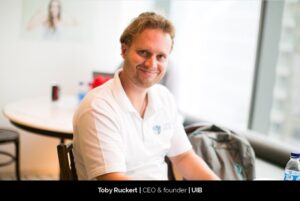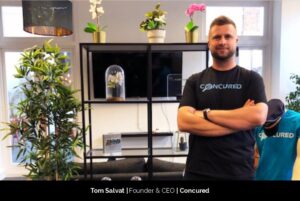The CIO’s Best Friend: A Digital Transformation Index
The 10 Most Influential People To Watch Out For, 2020

Our current digital society has created paradoxical work
environment for Chief Information Officers. Many have said… ‘this is worst time
to be mediocre CIO, and the greatest time to be a great CIO.’ The paradox of
swinging between the greatest of times and the worst of times is something each
CIO must master. In my own way, I have first and foremost decided to recreate
my own mission statement creed o as a ‘CIO’. My mission is fairly simple and
straight forward and reads. ‘As a CIO my mission is to help those I serve to
survive and thrive in a digital society.’
A global and digital society requires both a shift and
roadmap on how data, information, knowledge, intelligence, and communication
reach a world-wide audience. In order to shift and measure against a digital
roadmap, a Digital Transformation Index (DTI) may serve as the CIO’s best
friend and best instrument to identify how well the transformation is
progressing. However, more importantly, it will be a measurement of how well
you are helping the organization and people you serve to survive and thrive in
a digital world.
The status quo of developing an information technology
strategic plan is being challenged as C-Level executives must be proactively
adaptive and nimble to the quick shifts in business, consumers, social, global,
and the impact of IoT. The necessity for a new form of adaptive planning is
evident as C-Level executives are in flux over the top three assets their Chief
Information Officer (CIO) must possess. Some believe the CIO role should be
shifted toward revenue generation, while others believe it should shift more
toward innovation, and yes some believe it should shift more toward a Chief
Digital Officer.
“A Digital Transformation Index (DTI) may serve as the
CIO`s best friend and best instrument to identify how well the transformation
is progressing”
The inability to identify the exact niche’ for today’s CIO
is a result of not being able to measure the success of how an organization is
transforming their digital presence and digital footprint. The CIO as well as
every other key role must put on the digital gloves and work toward a measure
of success during the explosion of IoT and digital transformation. A digital
transformation is possible, if the digital transformation is methodically
planned and measured.
Whether you call your change-agent a CIO, CMO, or CDO it is
imperative that there is an enterprise wide ‘method’ or ‘tool’ that measures
the success of digital transformation. The method or tool chosen must serve as
the focal point for increased revenue, increased customer satisfaction, and a
greater digital footprint. Hanging the digital transformation responsibilities
on the CIO/CDO/CMO is a plan for failure. An even worse plan for failure is to
re-label the position of CIO and expect different results.
Over the past five years it became apparent that the role of
a CIO, CDO, CMO is most effective when the goal is not solely on business
change or revenue change. Rather, the goal must be aimed perfectly at the
center of a planned digital transformation to meet the needs of a global and
digital world. With a global society making strides in leveraging all digital
tools and venues, the best business and revenue shifts will be met when the
CIO, CDO, CMO lead their organization to a greater digital maturity. As a CIO
myself, once I shifted my primary focus from trying to improve the bottom
line-and focused on helping global citizens survive and thrive in a digital
world, the bottom line improved itself. This shift puts a focus on measuring
the digital transformation against a baseline, which I have labeled the DTI.
As I started my last CIO assignment at Oral Roberts
University (ORU) in Spring of 2014, it was clear that the trend of being a
traditional CIO must be changed, as the previous four CIO’s all transitioned
out in less than five years. The reason I accepted the CIO position was
actually the large carrot in ORU’s Globalization Case Statement ‘Use new
paradigms in technology to reach millions of people with accredited education.’
This goal was the perfect match with my own shift in being a CIO-to help global
citizens survive and thrive in a digital world.
It did not take long for me to realize that the status quo
would not suffice, and something fresh had to quickly grab the attention of the
stakeholders; yet sustain the focus on the real transformation being requested.
This was the beginning of my own DTI. The DTI would allow me to draft a
baseline of digital assets capable of meeting the digital needs of a global
society, yet show ongoing and clear progress. The baseline starting index was a
low score of 59 points out of a target of 240 points. This starting point
helped clarify why the previous CIOs wrestled with the assignment, and why the
stakeholders put a stretch goal of transforming the business with new paradigm
shifts.
After 20-months and the capstone project of designing and
opening a Global Learning Center with Virtual and Augmented Reality it became
clear that the Digital Transformation Index was the pathway that allowed
everyone to succeed. The Digital Transformation Index at ORU actually reached
beyond the 240 points with 260 points. The index itself with a point system was
only a validation of how much digital transformation was occurring. The index
point system methodology was what was critical to identify 26 digital success
outcomes. Below are five out of the 26 measures and outcomes of the DTI.
1. ORU reached 100 percent adoption of the main Digital
System for educational creation and delivery.
2. ORU created a digitally flipped university that allows
all global citizens to be connected to their educational journey from anywhere
in the world from their mobile device.
3. ORU went from having no nation awards or publications on
digital success to five awards and over 350 newspapers, journals, and eBooks
written on digital transformation in education.
4. ORU had their two most significant years of enrolment
growth and revenue health.
5. ORU’s IT department became 40 percent more efficient with
staffing, digital credentials, and budget spending.
About the Author
Michael L. Mathews (Mike) is AVP for Technology &
Innovation CIO, Oral Roberts University. He has over 24-years of experience as
a senior-level IT executive bringing creative solutions that value the
end-users of technology and business process management. These solutions have
benefited the end-users of higher education, manufacturing, and high technology
company products. Mike has held positions as a chief information officer,
general manager of CIOs, chief strategist for innovation, business development
officer, trainer, teacher, and vice president of academic services for leading
corporations and higher education. Mike has been a CIO within higher education
for over 12 years.














